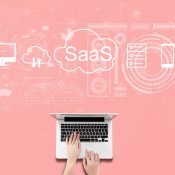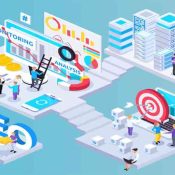
The Ultimate Guide to Effective SaaS Growth Strategies
In the dynamic and ever-evolving SaaS (Software as a Service) industry, sustainable growth is the holy grail that every company strives for. With intense competition, rapidly changing customer demands, and the constant need to innovate, having a well-defined and effective growth strategy is paramount. This blog post will explore the core elements of a successful SaaS growth strategy, the key factors driving growth, and practical strategies you can implement to propel your business forward in 2025 and beyond.
Core Elements of a SaaS Growth Strategy
A comprehensive SaaS growth strategy should encompass the following core elements:
Customer Acquisition:
This involves continuously identifying and implementing tactics to attract and convert new customers to your SaaS platform. Strategies may include targeted digital campaigns, content marketing, search engine optimization (SEO), social media marketing, and partnerships with complementary businesses. You can expand your user base and drive revenue growth by focusing on customer acquisition.
Customer Retention and Expansion:
It’s essential to prioritize customer satisfaction and loyalty to minimize churn and maximize lifetime value. Implementing strategies such as providing exceptional customer support, offering personalized experiences, and continuously adding value to your product can help retain existing customers. Additionally, creating opportunities for upselling, cross-selling, and encouraging referrals can lead to expansion within your customer base.
Product Innovation and Development:
Stagnation is the enemy of growth in the SaaS industry. Continuous innovation and development are necessary to meet evolving market demands, stay ahead of competitors, and address customer needs effectively. This involves gathering customer feedback, monitoring industry trends, and iterating on your SaaS offering to introduce new features, improvements, and integrations.
Marketing and Branding:
Building a strong brand presence is crucial for attracting and retaining customers in the competitive SaaS landscape. Invest in branding efforts that communicate your unique value proposition, establish credibility, and resonate with your target audience. This may include developing a compelling brand story, creating high-quality content, engaging with your audience on social media, and participating in industry events and conferences.
Sales and Revenue Optimization:
Optimizing your sales processes, pricing strategies, and revenue models can significantly impact your SaaS growth trajectory. Experiment with different pricing tiers, packaging options, and subscription models to find the optimal balance between customer value and business profitability. Additionally, implementing sales enablement tools, training programs, and performance metrics can help your sales team operate more efficiently and effectively.
Operational Efficiency:
To support scalable growth, optimizing internal processes, leveraging automation, and allocating resources effectively is essential. Identify areas where inefficiencies exist and implement solutions to streamline workflows, reduce costs, and improve productivity. This may involve adopting project management tools, implementing standardized procedures, and investing in employee training and development.
What are the Biggest Factors in SaaS Company Growth?
Several key factors can significantly impact the growth trajectory of a SaaS company:
Product-Market Fit:
Ensuring your SaaS product or service effectively solves a real pain point for your target market is crucial for sustainable growth.
Customer Acquisition Cost (CAC) and Lifetime Value (LTV):
Maintaining a healthy ratio between the cost of acquiring new customers and the projected lifetime value of those customers is essential for profitability and growth.
Churn Rate:
Minimizing customer churn and maximizing retention is vital, as retaining existing customers is generally more cost-effective than acquiring new ones.
Market Demand and Competition:
The overall demand for your SaaS offering and the level of competition in your market can significantly impact growth potential.
Pricing and Revenue Model:
Optimizing your pricing strategy and revenue model (e.g., subscription, usage-based, freemium) can unlock new growth opportunities and increase profitability.
Team and Resources:
To support and sustain growth initiatives, a skilled and dedicated team, sufficient financial resources, and operational capabilities are necessary.
Why Are SaaS Growth Strategies So Important for Your Business?
Implementing effective SaaS growth strategies is crucial for several reasons:
Increased Revenue and Profitability:
Attracting and retaining more customers and optimizing pricing and revenue models can drive substantial revenue growth and improve profitability.
Competitive Advantage:
A well-executed growth strategy can help you outpace competitors, gain market share, and establish a stronger position in your industry.
Scalability:
Effective growth strategies enable you to scale your business operations, resources, and infrastructure to support and sustain rapid expansion.
Investor Confidence:
For SaaS companies seeking funding or going public, a proven growth strategy can instill confidence in investors and positively impact valuation.
Customer Satisfaction and Loyalty:
By continuously improving your product and delivering exceptional customer experiences, you can foster long-term customer satisfaction and loyalty, essential for sustainable growth.
Effective SaaS Growth Strategies You Should Implement in 2025
Some practical and effective SaaS growth strategies to consider implementing in 2025:
Inbound Marketing and Content Strategy:
In 2025, the digital landscape will continue to be driven by valuable content. Inbound marketing involves creating content that attracts potential customers to your SaaS product organically. This could include blog posts addressing your target audience’s pain points, whitepapers offering in-depth solutions, webinars providing valuable insights, and more. The key is to ensure your content is informative and optimized for search engines to improve its discoverability.
Paid Advertising and Lead Generation:
While inbound strategies are crucial, paid advertising remains a powerful tool for reaching new audiences. Leveraging platforms like Google Ads and social media advertising allows you to target specific demographics and interests, driving qualified leads to your SaaS offering. Coupled with effective lead generation strategies, such as gated content or interactive quizzes, you can capture valuable customer information and nurture leads through the sales funnel.
Product-Led Growth (PLG):
In the SaaS industry, the product can be a key growth driver. By offering free trials, freemium models, or incorporating in-app messaging to guide users through your product features, you can create a seamless user experience that encourages adoption and conversion. PLG focuses on delivering value upfront, allowing users to experience the benefits of your product firsthand before committing to a purchase.
Customer Success and Retention Initiatives:
Acquiring new customers is important, but retaining existing ones is equally crucial for sustainable growth. Investing in customer success programs ensures that users continue to use your SaaS product and derive maximum value from it. Proactive support, personalized onboarding experiences, and ongoing education can all contribute to customer satisfaction, leading to higher retention rates and increased revenue through upsells and expansions.
Strategic Partnerships and Integrations:
Collaborating with complementary businesses or industry leaders can significantly expand your SaaS product’s reach and credibility. By forming strategic partnerships and integrating with other platforms or services, you can tap into new customer bases and provide added value to existing users. Co-marketing initiatives can amplify your brand’s visibility and generate leads through shared promotional efforts.
Referral and Affiliate Programs:
Word-of-mouth remains one of the most powerful marketing tools, and referral and affiliate programs capitalize on this by incentivizing existing customers and partners to promote your SaaS offering. By offering rewards or discounts for successful referrals, you can turn satisfied customers into advocates who actively contribute to your customer acquisition efforts.
Analytics and Data-Driven Optimization:
In the digital age, data is king. By leveraging advanced analytics tools, you can gain valuable insights into user behavior, conversion patterns, and market trends. This data-driven approach allows you to identify areas for improvement and optimize your marketing, sales, and product strategies accordingly, maximizing your ROI and accelerating growth.
International Expansion:
Expanding your SaaS offering into new geographic regions as markets become increasingly globalized can unlock significant growth opportunities. However, successful international expansion requires careful consideration of cultural nuances, regulatory requirements, and language localization. By tailoring your product and marketing efforts to suit the needs of diverse international audiences, you can tap into new markets and diversify your revenue streams.
Top Tools For SaaS Growth Strategies
HubSpot
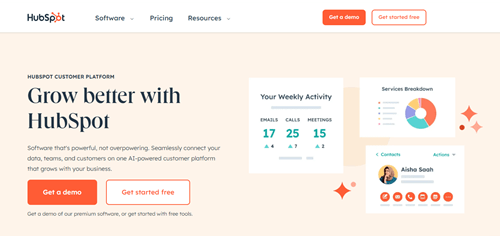
HubSpot is a comprehensive marketing, sales, and customer service platform that can streamline and support various aspects of your SaaS growth strategy. With its powerful suite of tools, you can:
- Implement effective inbound marketing campaigns, including content creation, lead generation, email marketing, and marketing automation.
- Optimize your website for better user experience, lead capture, and conversion rate optimization (CRO).
- Manage your entire sales pipeline, from lead qualification to deal closing and customer relationship management (CRM).
- Provide exceptional customer service and support, fostering customer satisfaction and retention.
- Gain valuable insights through analytics and reporting, enabling data-driven decision-making and strategy optimization.
Google Analytics
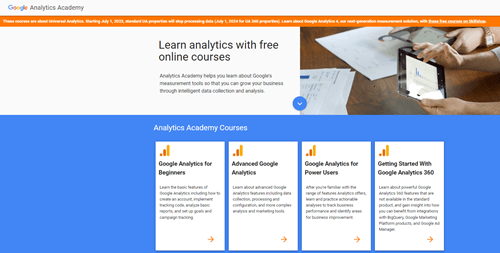
Google Analytics is a free, powerful web analytics tool that provides invaluable insights into your website traffic, user behavior, and marketing campaign performance. By leveraging Google Analytics, you can:
- Understand your audience and their demographics, interests, and behavior patterns.
- Identify the most effective acquisition channels and traffic sources for your SaaS business.
- Analyze user engagement metrics, such as bounce rates, session durations, and conversion rates.
- Track and measure the performance of your marketing campaigns, including organic search, social media, and paid advertising efforts.
- Set up goals and e-commerce tracking to monitor and optimize your sales and revenue metrics.
Hotjar
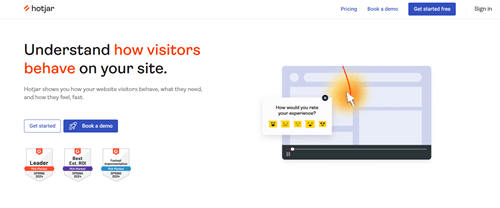
Hotjar is a user experience and behavior analytics tool that helps you understand how users interact with your website and SaaS product. By leveraging Hotjar, you can:
- Gather real-time user feedback through on-site surveys and feedback polls.
- Conduct user testing and gather insights on usability and user experience (UX) issues.
- Analyze user behavior through heatmaps, session recordings, and conversion funnels.
- Identify pain points, bottlenecks, and areas for improvement within your product or website.
- Make data-driven optimizations to enhance user experience, reduce friction, and improve conversion rates.
Ahrefs

Ahrefs is a comprehensive suite of SEO tools that can help you optimize your content and website for better search engine visibility and organic traffic acquisition. With Ahrefs, you can:
- Conduct in-depth keyword research and identify high-potential target keywords for your SaaS business.
- Analyze your website’s technical SEO health and identify any potential issues or areas for improvement.
- Monitor your website’s backlink profile and identify opportunities for link building and off-page SEO.
- Conduct competitor analysis to understand their content and link-building strategies.
- Track your website’s search engine rankings and monitor your progress over time.
G2 Crowd
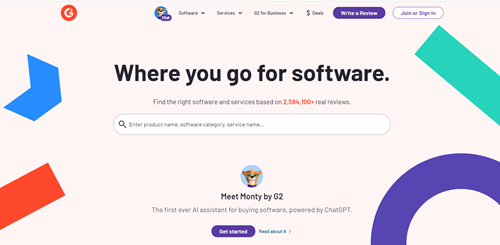
G2 Crowd is a leading software review and comparison website that can help you research and evaluate various SaaS tools and solutions to support your growth initiatives. On G2 Crowd, you can:
- Read authentic reviews and ratings from real users of different SaaS products and services.
- Compare features, pricing, and user satisfaction scores across multiple solutions within a category.
- Identify the tools and software that best fit your specific needs and requirements.
- Stay updated on the latest trends, innovations, and best practices within the SaaS industry.
- Leverage valuable insights and recommendations from industry experts and thought leaders.
FAQs
What is the difference between product-led growth (PLG) and traditional sales-led growth?
Product-led growth (PLG) focuses on using the product as the primary driver of customer acquisition, conversion, and expansion, often through features like free trials, freemium models, and in-app messaging. In contrast, traditional sales-led growth relies more heavily on a dedicated sales team and outbound marketing efforts to generate leads and close deals.
How do I determine the right pricing strategy for my SaaS offering?
The optimal strategy involves considering factors like your target market, competitive landscape, perceived value, and customer acquisition costs. Common pricing models include flat-rate pricing, tiered pricing, usage-based pricing, and freemium models. Continuously testing and optimizing your pricing strategy is crucial.
How can I improve customer retention and reduce churn?
Improving customer retention and reducing churn can involve implementing proactive customer success programs, providing exceptional support and customer education, continuously improving your product based on user feedback, and offering incentives or discounts for long-term customers. Regularly monitoring and addressing churn drivers is also essential.
What are some effective ways to leverage strategic partnerships for growth?
Strategic partnerships include co-marketing initiatives, product integrations, affiliate programs, or bundling your SaaS offering with complementary products or services. Identifying and collaborating with partners with access to your target audience or offering synergistic solutions can benefit growth.
How do I measure the success of my SaaS growth strategies?
Key metrics to measure the success of your SaaS growth strategies include website traffic, lead generation, customer acquisition rates, customer lifetime value (LTV), monthly recurring revenue (MRR), churn rate, and overall revenue growth. Tracking and analyzing these metrics can help you optimize and refine your strategies.
How can I ensure my SaaS growth strategies align with my business objectives?
To ensure alignment, clearly define your overarching business objectives, such as revenue targets, market share goals, profitability milestones, or exit strategies. Then, develop your SaaS growth strategies with those objectives, ensuring that each tactic and initiative directly contributes to achieving your desired outcomes.
Conclusion
In conclusion, implementing effective SaaS growth strategies is essential for driving sustainable success in today’s competitive landscape. By leveraging tools and techniques such as inbound marketing, paid advertising, customer communication platforms, user analytics, and graphic design resources, businesses can attract, engage, and retain customers while maximizing their ROI. Whether creating valuable content, reaching targeted audiences through advertising channels, providing personalized customer experiences, analyzing user behavior, or crafting visually compelling marketing materials, the key is prioritizing continuous optimization and innovation. By embracing these strategies and adapting to evolving market trends, SaaS companies can position themselves for long-term growth and profitability in an ever-changing digital ecosystem.


